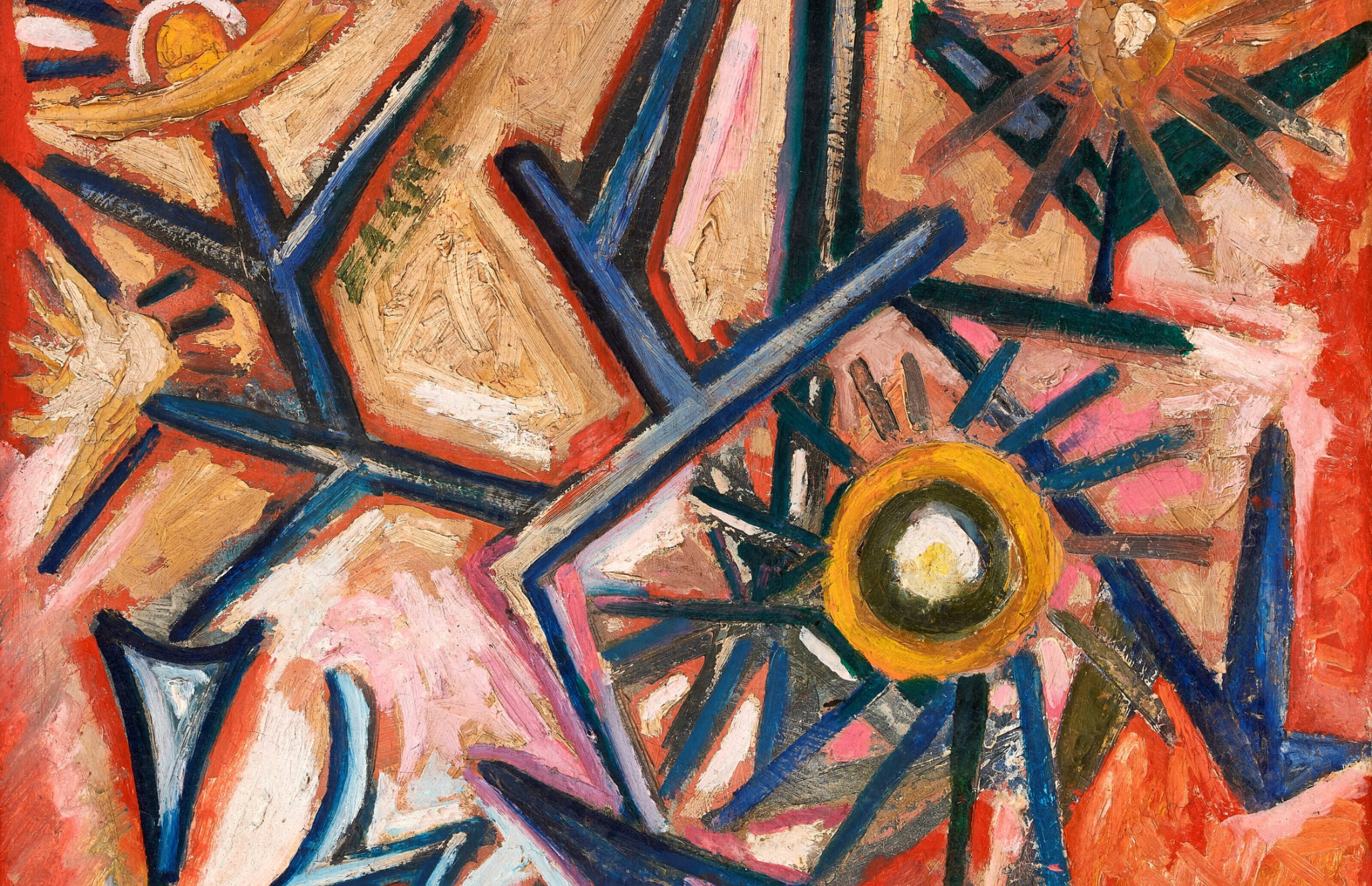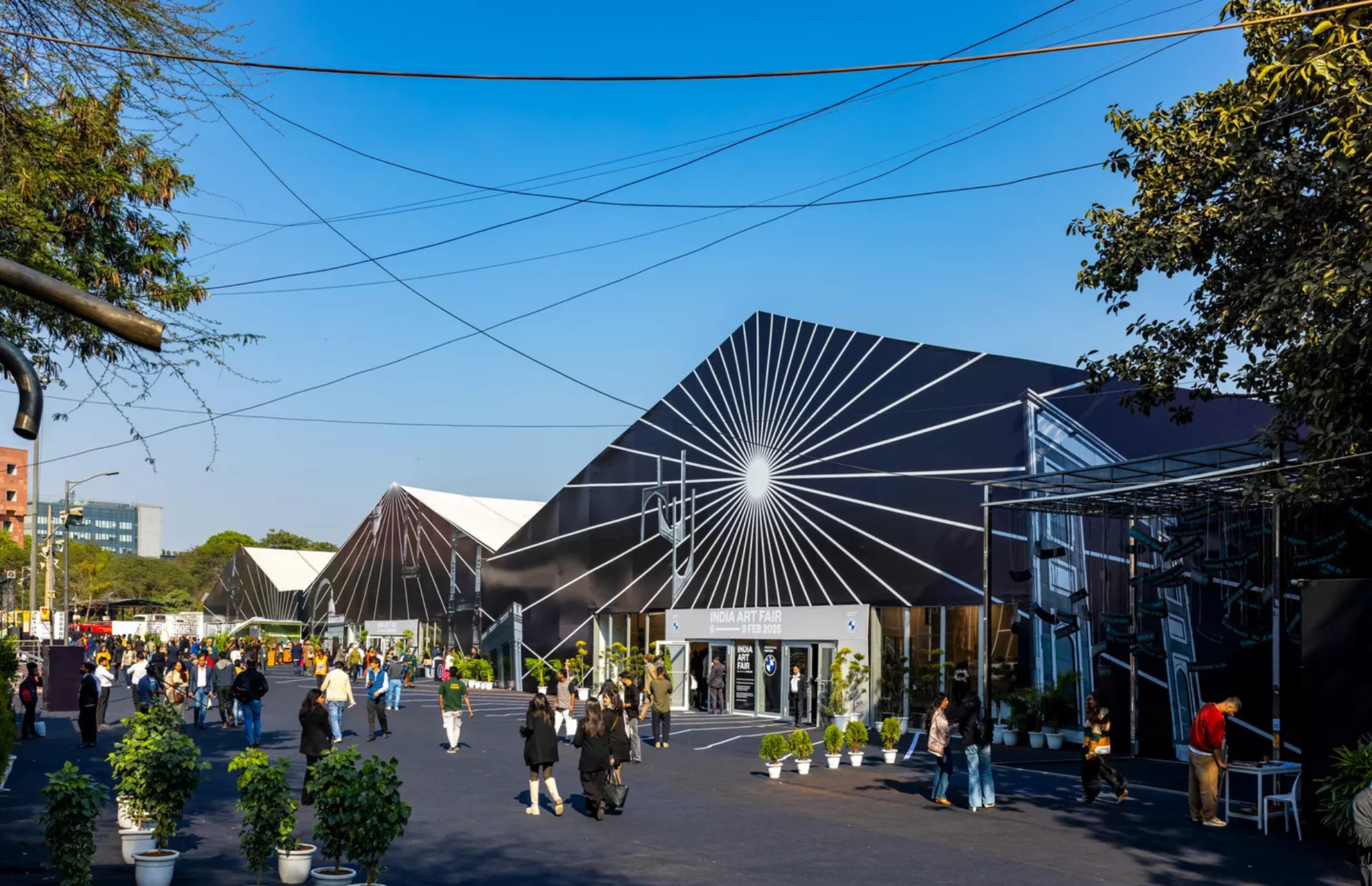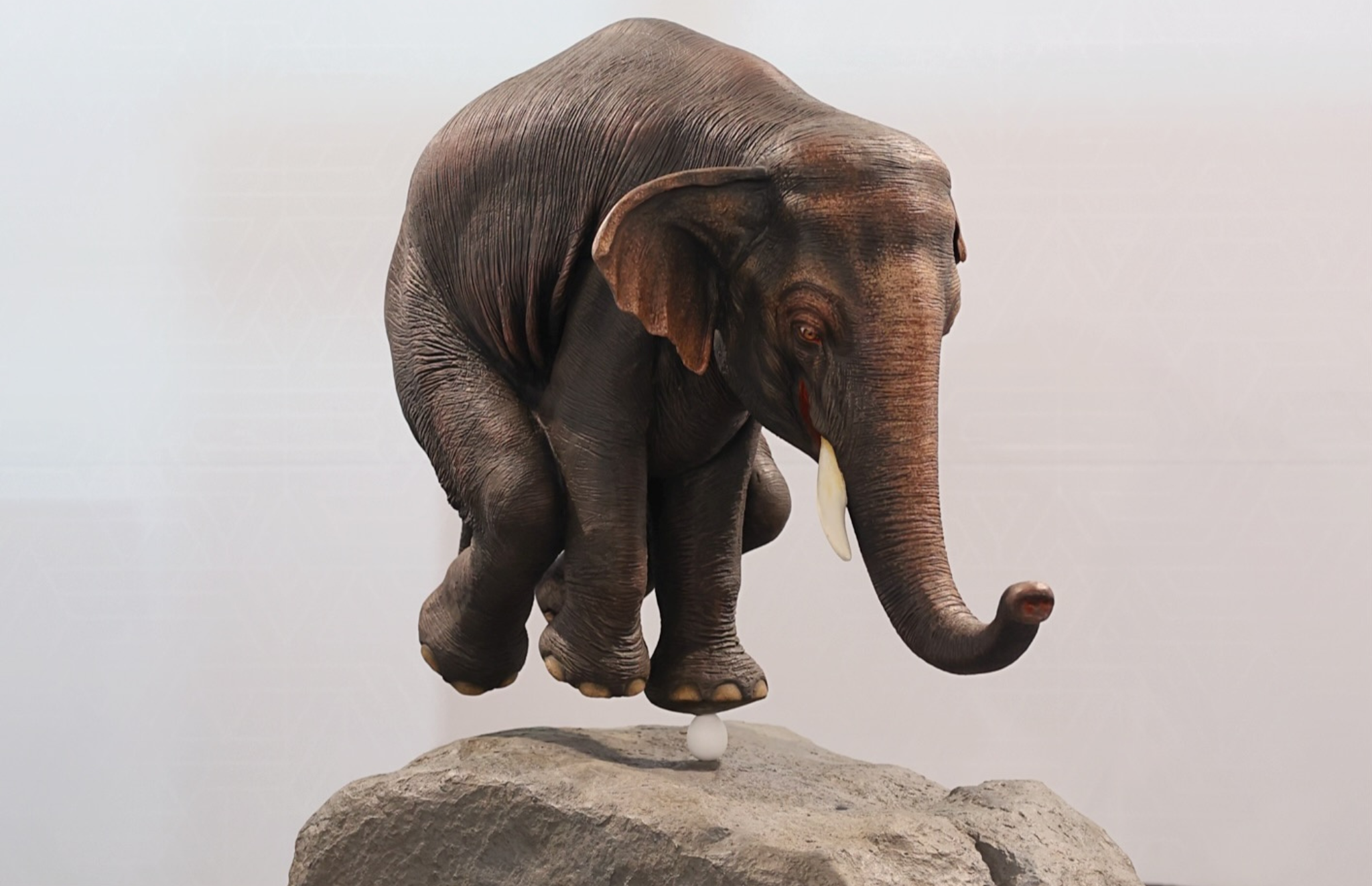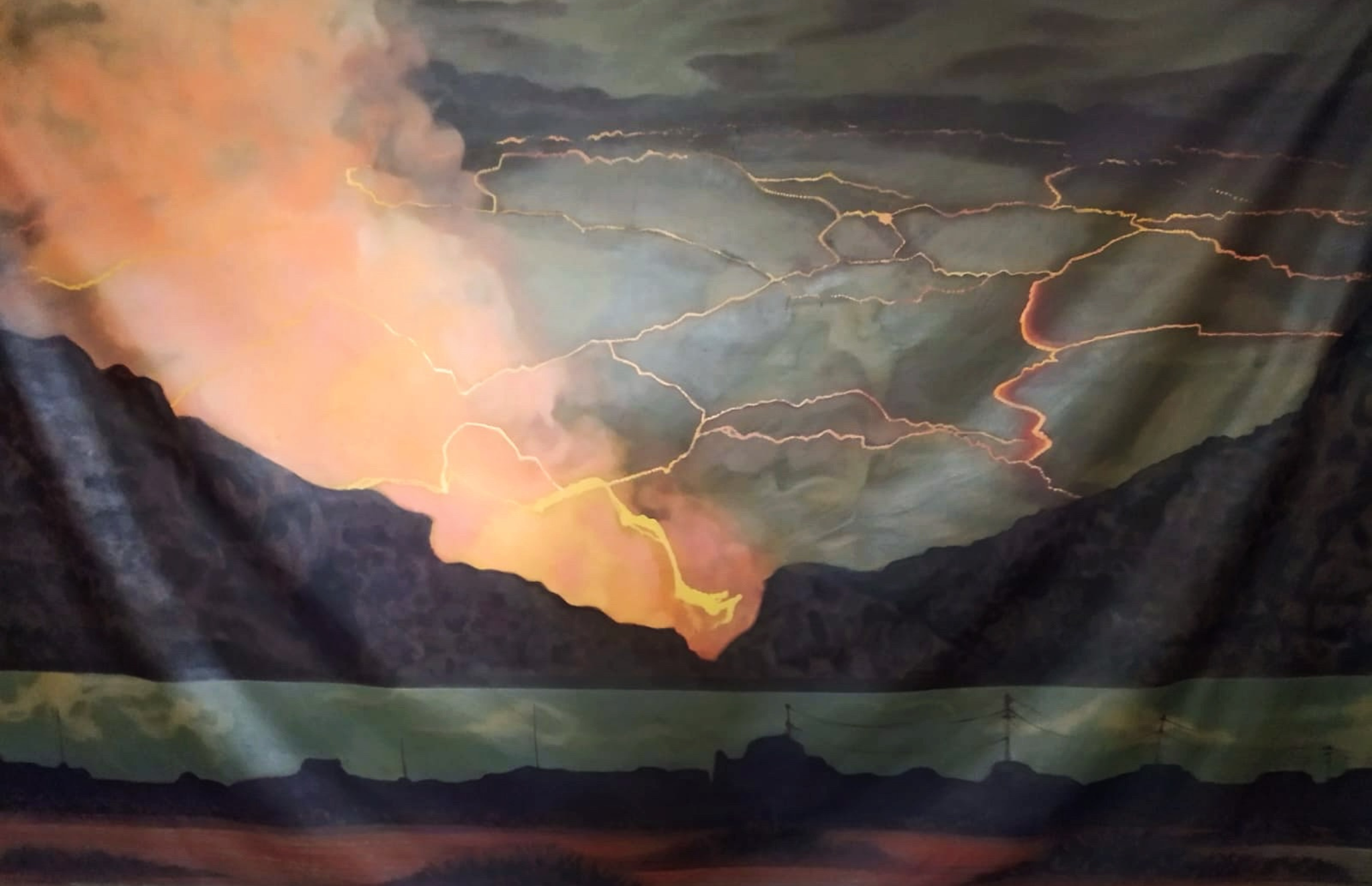Indian Representation at the 60th edition of the Venice Biennale
The 60th edition of Venice Biennale, Foreigners Everywhere, opened its door to the public on April 20th and will continue until November 24th. The Biennale draws its title from the collective, Claire Fontaine’s neon sculptures “Foreigners Everywhere,” where they presented the word ‘foreigners everywhere’ in different languages. It was inspired from another Turin-based collective, Stranieri Ovunque, which is fighting growing xenophobia and racism in Italy. The Biennale questions the notion of a “foreigner” by investigating and interpreting the term in a different light.
In this year’s edition of Venice Biennale, India’s participation has been very impressive. Kiran Nadar Museum of Art, the Aravani Art Project and eight other Indian artists’ are presenting their works in the Nucleo Contemporaneo and the Nucleo Storico sections of the exhibition. Here are the key highlights from the Indian participants from the exhibition:
1. M.F. Hussain, The Rooted Nomad
Kiran Nadar Museum of Arts (KNMA) with its The Rooted Nomad exhibition, brings into spotlight one of the leading modernist painters of India, M.F. Hussain. Husain’s itinerant imagination and “spirit” inspired the exhibition’s title. Curated by Roobina Karode, the presentation seamlessly weaves into Venice Biennale’s larger theme of “Foreigners Everywhere”. Bringing together Hussain’s works in different mediums, such as wooden toys, photographs, letters, collages, and snippets from his films and paintings, the exhibit depicts his idea of India as a ‘cultural mosaic’. It also serves KNMA’s larger vision of celebrating Indian artists across the globe. Curator Roobina Karode explains how Hussain’s journey of seeing the world shaped his works. Even though he felt foreign in the latter part of his career, he was still native to his country. The show also highlights the impact and influence of his Indian identity and upbringing on his work, making them inseparable.
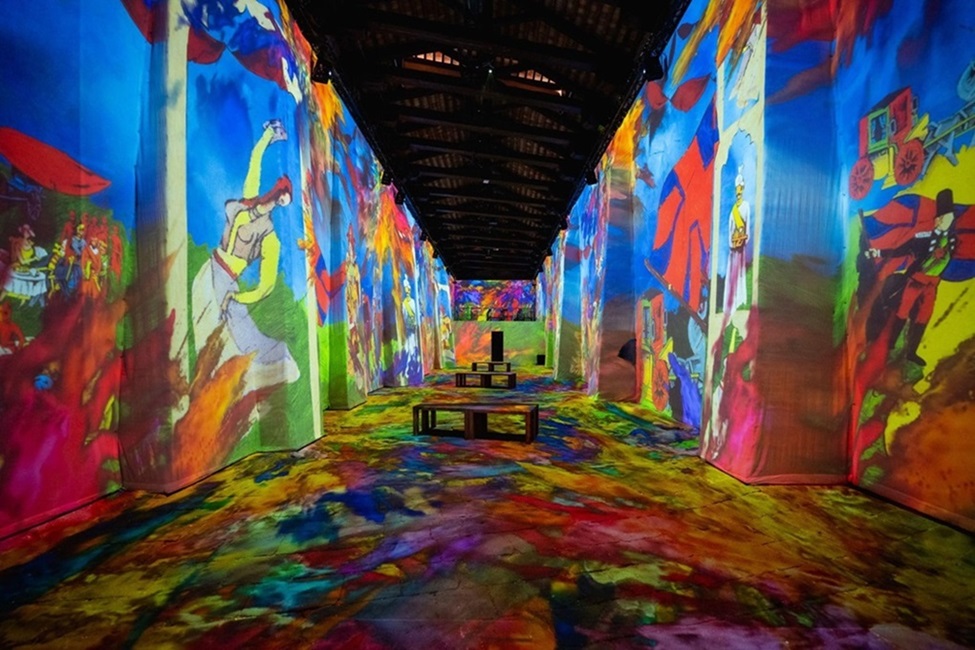
Image Courtesy: KNMA
2. Aravani Art Project, Diaspore
Aravani Art Project, a Bengaluru-based collective, painted a site-specific mural at the Arsenale’s Nucleo Contemporaneo. The collective involves transgender and cis women, and the mural is titled Diaspore (2024). Symbolised by a caged bird set free, the work marks the 10th anniversary of Indian judiciary’s recognition of the transgender individuals. The mural showcases a series of trans bodies, and the processes of gender dysphoria, transition, and acceptance of their identities. It resonates with the theme of the Biennale, Foreigners Everywhere, by suggesting how people who do not associate with their assigned gender often feel alienated in their bodies. By utilising the vibrant colours of the LGBTQIA+ flag, the project, aims to envision a world where all identities are accepted and feel at home.
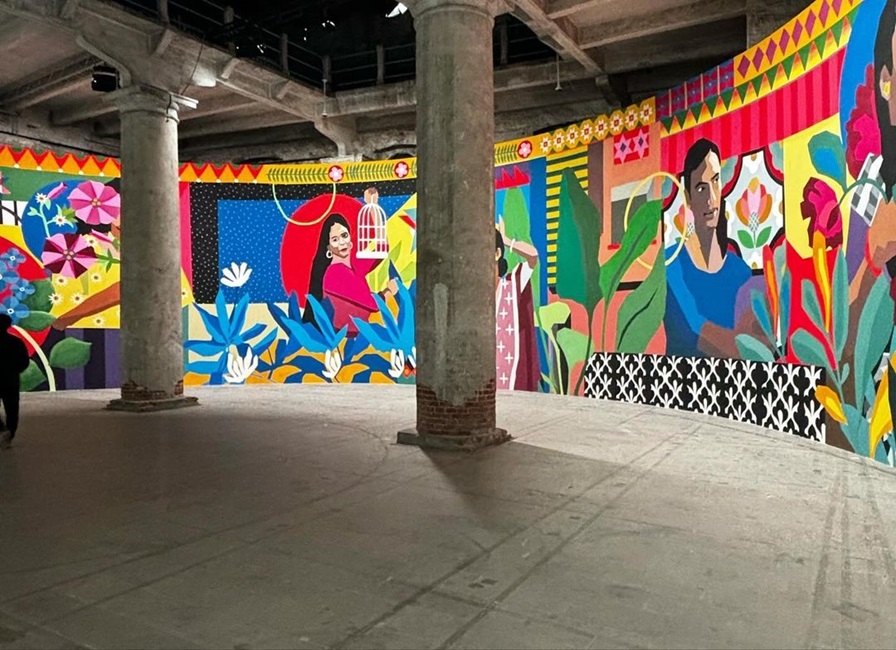
Image Courtesy: Aravani Art Project
3. Cosmic Garden
Presented as a Collateral Event of the 60th of the Venice Biennale, ‘Cosmic Garden’ pays homage to the feminine energy, Shakti, with a series of paintings, embroideries, and sculptures. The themes explore Indian myths, crafts and the Vedic philosophy. Experimenting with different mediums of arts and crafts, the project also delves into the tapestries of Indian embroidery. Through the traditional embroidery, the artists weave together the past and present. Some artists presenting their work include: Manu Parekh, Madhavi Parekh, and Karishma Swali, the Creative Director of Chanakya School of Crafts. The figurative artistic practice of Madhavi Parekh and abstract works of Manu Parekh stem from their shared Gujarati heritage, while India’s rich cultural traditions also influence their works.
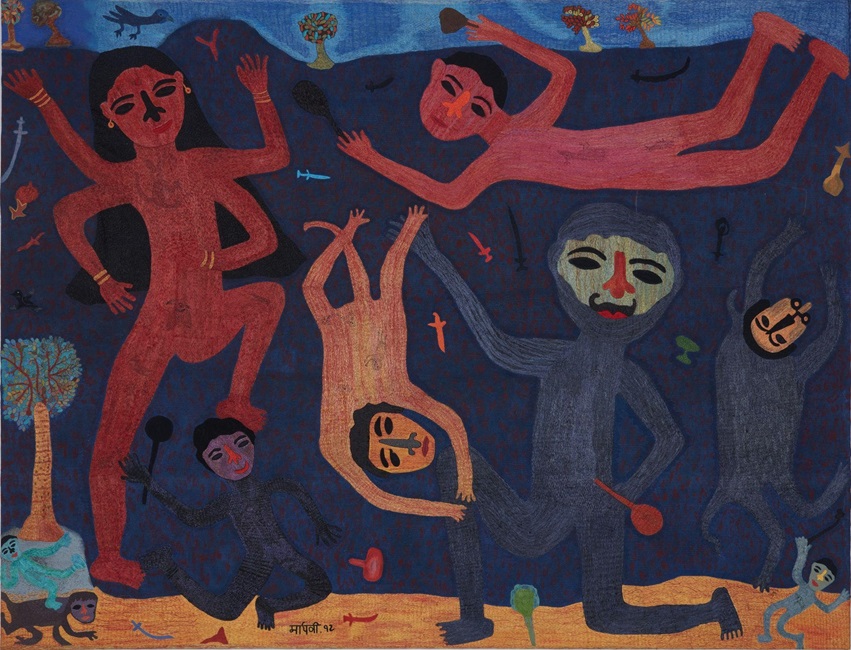
Image Courtesy: Chanakya School of Crafts
4. Foreigners Everywhere
The Biennale has been divided into three sections. The first section, Foreigners Everywhere, brings together artists’ portraits, abstractions, contemporary works, among others — showcasing the works of modernist artists from the Global South, lesser known in the Western world. The Nucleo Storico, Abstractions, and the Nucleo Contemporaneo sections are showcasing over 100 artists and their portraits. Among these, the Indian presentation showcases some of the most influential modernists who have shaped Contemporary Indian Art world.
B.Prabha, an artist from the Nagpur School of Art, is being presented for the very first time at Biennale Arte. Her paintings often depict female characters, usually in a rural backdrop and intimate tones. A remarkable example of this is Waiting, which features a female figure merging with the intense emerald shade of the flora in the background. The elongated half-naked left profile of the woman, with its back staring into the distance, gives the audience a sense of yearning; thus the title, Waiting. The painting is a skilful mastery of a solitary figure with bold colours.
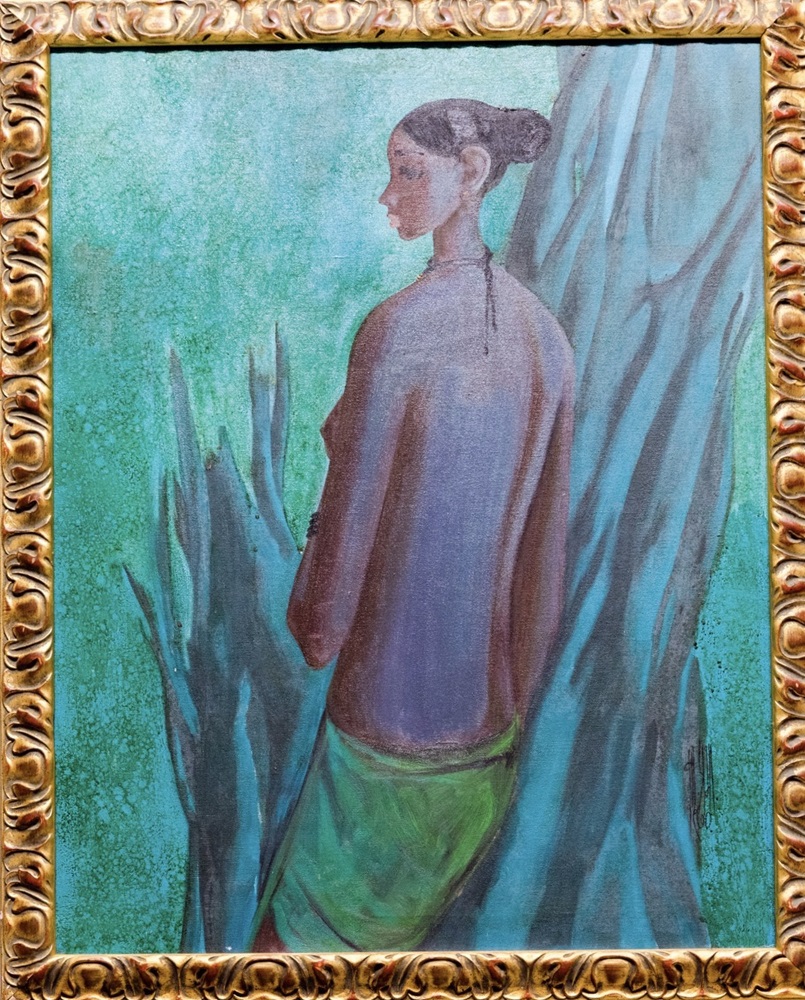
Image Courtesy: La Biennale di Venezia
Ram Kumar is the other renowned artist that is being exhibited at the show. Kumar, who started as a writer and a journalist, takes inspiration from the characters that he wrote about in his short stories. An overwhelming sense of solitude and alienation is a recurring theme in his work, projecting his idea of contemporary urban life. Women (1953) depicts four female figures with their torsos. Devoid of any cultural markers, the work renders his early exploration into alienation, before he ventured into the world of abstraction.
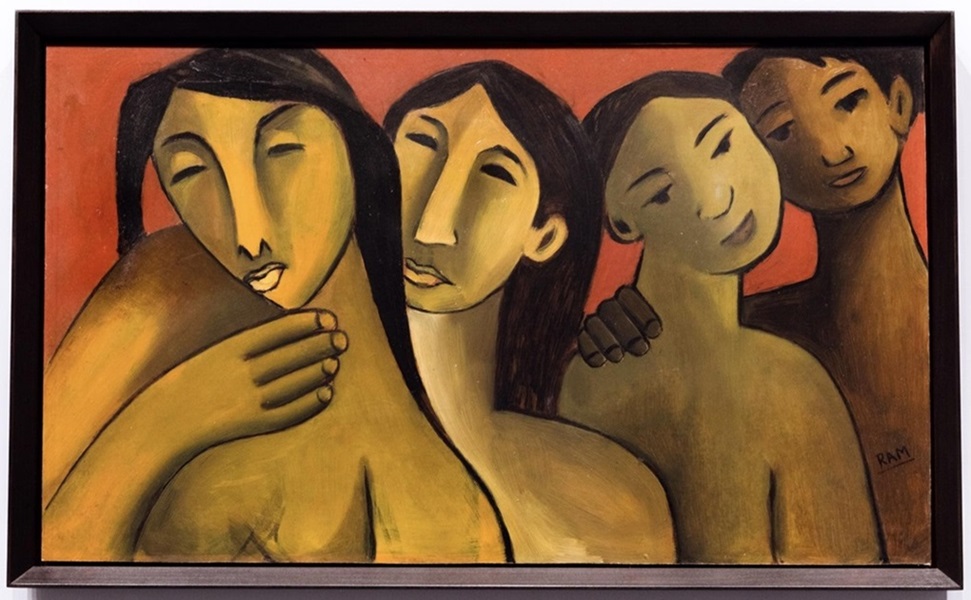
Image Courtesy: La Biennale di Venezia
Pioneer Indian primitivist-modernist artist, Jamini Roy’s untitled portrait of Lord Krishna holding a parrot, is another Indian painting that’s attracting the crowd to the show. The piece shows Krishna holding a parrot close to his chest, a recurring motif in many Bengali folk paintings. This depiction has several versions, and is widely interpreted as Indigenous Santal man or Kama, deity of eroticism. The folk art inspiration along with flat outlines and thick black strokes are archetypal of Roy’s style. This “Blue God” often reappears throughout Roy’s oeuvre.
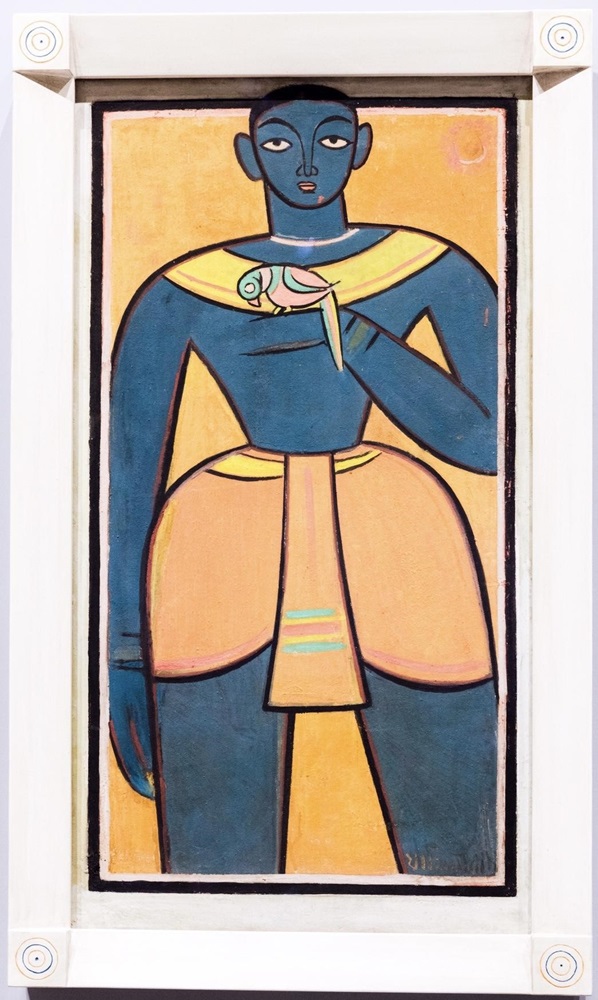
Image Courtesy: La Biennale di Venezia
Part of her later oeuvre, Amrita Sher-Gil’s the Head of a Girl, is one of the main highlights of the show. The work deviates from her usual Indian subjects, and depicts a figure with almond-shaped eyes, an oval face and heavy fringes, reminiscent of Sher-Gil’s photographs taken by her father between 1920-24. While Sher-Gil painted many self-portraits in her early years, it is contested whether the photograph served as a reference for her to make this work.
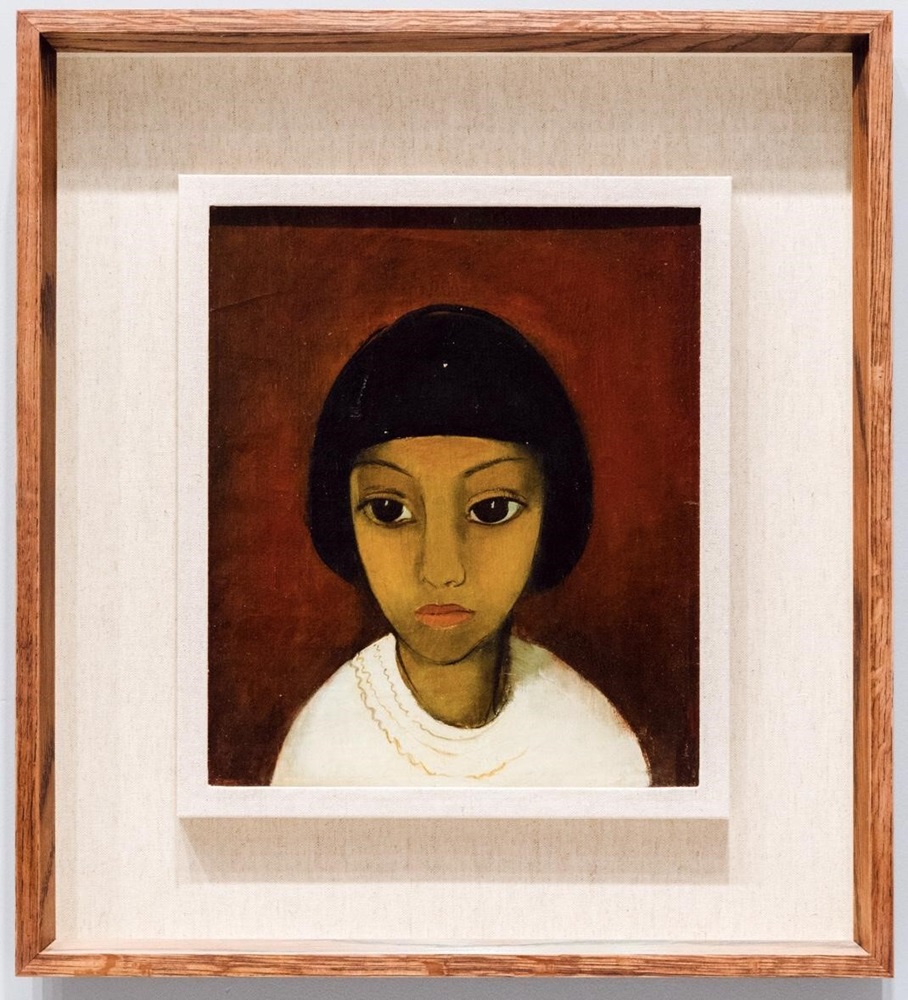
Image Courtesy: Taimur Hassan Collection
A staunch supporter of freedom of expression in technique and content, F.N. Souza’s work stands tall when it comes to painting and writing. He usually depicts bearded male figures with eyes painted high on the forehead, having scars on their face, and outlined with black brushstrokes.
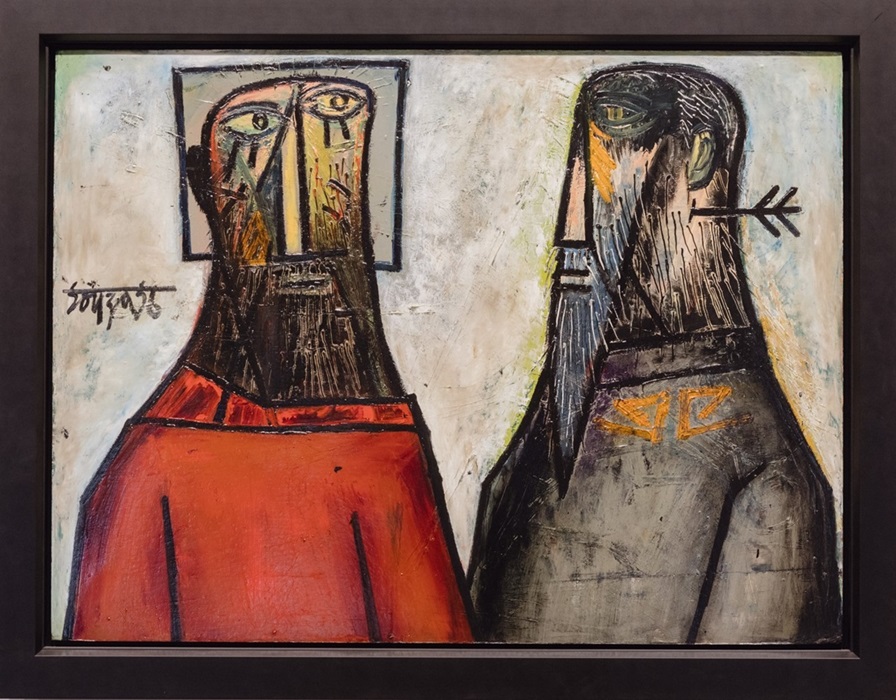
Image Courtesy: La Biennale di Venezia
The next important artist that is exhibited at the show is Monica Correa, whose work is being presented for the first time at Venice Biennale. Correa began weaving in Finland, where she came across the rya rugs. Her work, No Moon Tonight (1974), has a plain vertical weave and meandering patterns that break the sharp vertical lines, created by pulling out the reed. Nature, particularly the sky as depicted in the Persian and Central paintings are major sources of influence for Correa. The title gives a glimpse into her idea of abstractly depicting a moon eclipsed or rising as an interplay of dark and light. Coloured panels in the lower half are balanced by the monochromatic panel in the upper.
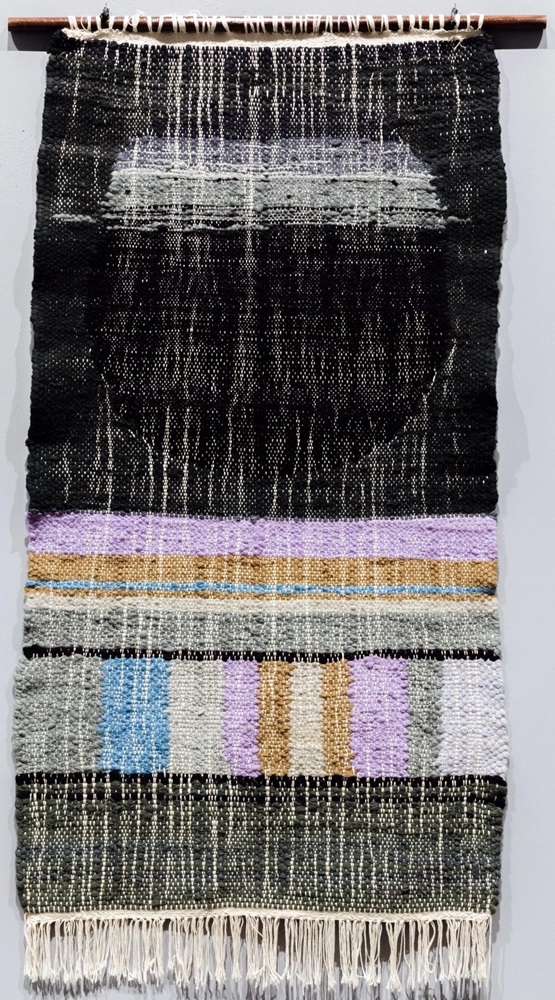
Image Courtesy: La Biennale di Venezia
S.H. Raza, one of the most famous modernist artist from India, known for his seminal abstract works, is another key attraction among the works being exhibited. Leitmotifs such as circles, triangles and squares, emblematic to Indic philosophy and spiritual traditions, are Raza’s unique visual style that he developed in the late 1970s. Offrande (1986) shows Raza utilising unique earthly colour palette of ochres, burnt umbers, greens and reds, paying a homage to the scorching heat and dense forests of Madhya Pradesh — the place where he grew up. The depiction of inverted triangles, and horizontal and vertical bands are motifs from yantras, or sacred esoteric diagrams.
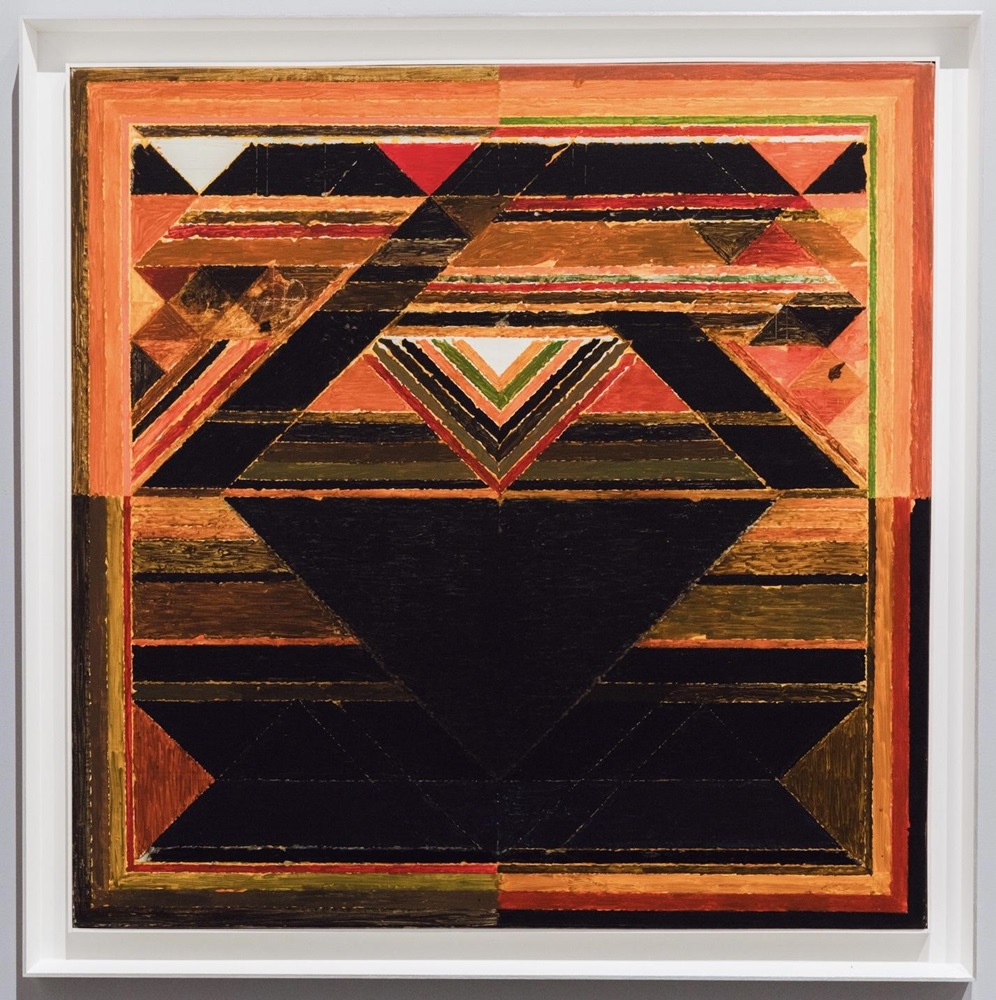
Image Courtesy: La Biennale di Venezia
Bhupen Khakhar’s seminal work on queer identity is also being exhibited at the show. Khakhar, who came out as a gay man, explores the notion of societal taboos surrounding homosexuality through his paintings. Fishermen in Goa (1985) portrays a group of three men — one naked, another fully dressed and the third in a vest. The painting delves into the idea of the sexualisation of the male body through allegories like a man holding a fish in one hand and the other hand reaching under his companion’s shirt. The thickly pigmented work, along with figures in the foreground, are representative of Khakhar’s style.
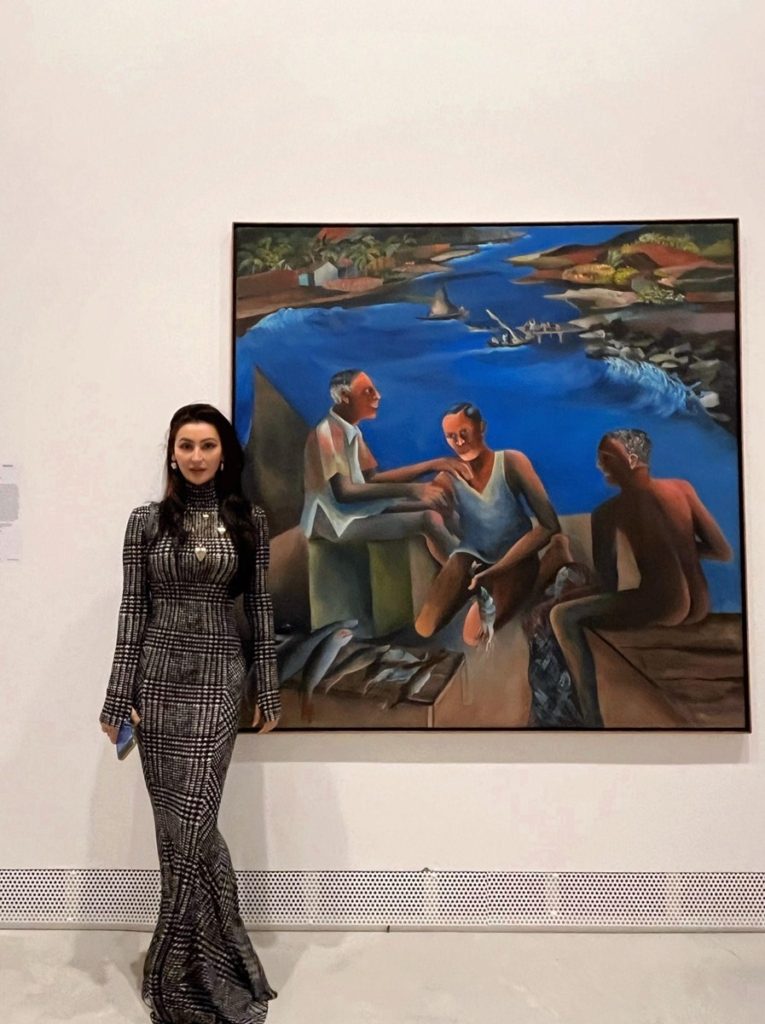
Image Courtesy: Shalini Passi
Text by Shalini Passi
Image Courtesy: KNMA, Chankaya School of Crafts, La Biennale di Venezia, Aravani Art Project, Shalini Passi
Find out more about the Biennale:


